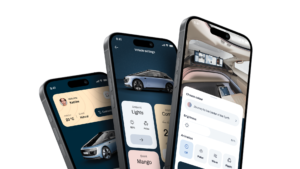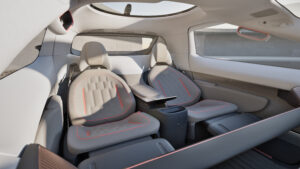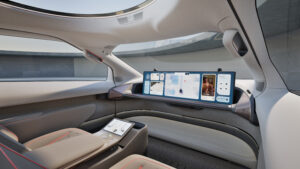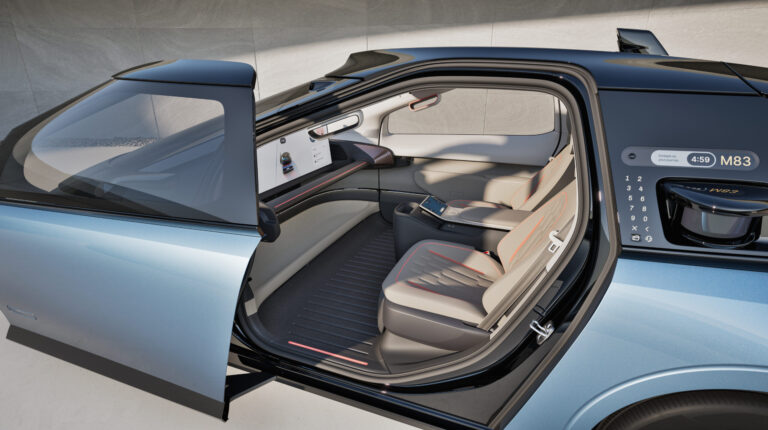A new approach to urban autonomous mobility, known as Verne, has been unveiled by Rimac.
Verne is a self-driving rideshare service based around a new two-seater autonomous vehicle, which was launched at Rimac Campus near Zagreb, Croatia, by Mate Rimac and colleagues from the Rimac Group – Marko Pejković, CEO of Verne, and Adriano Mudri, chief design officer.
Mudri said, “It was tricky to find the right name for our new endeavour that fits the vision. But once it clicked, it clicked, and it was easy to decide. We named ourselves after the Jules Verne, the famous author, who is said to be ‘the man who invented the future’.”
The Verne ecosystem will comprise three main elements: a fully autonomous electric vehicle, a mobility service platform (MSP) and specialized infrastructure.
Key elements
The recently launched AV was built on a new platform designed exclusively for autonomous driving and uses the Mobileye Drive autonomous platform. Rimac Group says it focused on safety and comfort without the constraints of traditional human-driven vehicle designs.

The platform is designed to enable users to personalize their ride experience via an app, by adjusting settings such as lighting, temperature and even scent. The back end can leverage the benefits of an autonomous connected fleet for smooth and efficient operation in urban settings.
Each city will feature a ‘Mothership’ facility where Verne vehicles are inspected, maintained, cleaned and charged daily. A production facility in Zagreb will manufacture these autonomous electric vehicles for global deployment.
Vehicle design and features
The two-seater Verne vehicle was designed with a focus on a spacious interior, Mudri said at the launch. The vehicle will have an ultra-wide 43in display for entertainment and journey information, a touchpad for system interaction and a sunroof named the Halo ring.

The extra-large seats enable five different levels of comfort and enjoyment to either work, relax or rest. “We wanted to make the interior less automotive and more like a living room. There is no typical dashboard, no steering wheel, and no pedals,” Mudri outlined.
“Why a two-seater? Because the data shows that 9 out of 10 rides are used by one or two people. Therefore, we can satisfy most of all trips with a two-seater and create unmatched interior space in a compact-sized vehicle.
“We completely redefined interior space. More space than a Rolls-Royce to relax and spend your time well. We optimized the door opening so people can just step in and sit down straight away. Sliding doors were designed not to obstruct traffic flow around the vehicle while still arriving in style. Once inside, passengers can stretch out their legs and get super comfortable.”

The ambiance can also be adjusted through sound and light to accompany the user’s mood.
Between the seats, a Touchpad for interaction with the in-vehicle system can easily adjust the vehicle’s settings. Also found here is the Median, a physical switch used to start and stop the ride which gives an additional sense of control over the autonomous vehicle.

The exterior design prioritized aerodynamic efficiency and integrated cameras, radars and lidars, without traditional elements like windshield wipers or side-view mirrors.
Verne co-founder Mate Rimac said, “You will have a safe and reliable driver, a vehicle with more interior space and comfort than the best limousines today, and a service that will be tailored to your needs in every possible way. The service will also provide customers with much more than just transportation from point A to point B.”
The first Verne service will be launched in Zagreb, Croatia, in 2026, and the company has plans to expand to other European cities, beginning with the UK and Germany, and to the Middle East. Verne says it already has agreements with 11 cities and is negotiating with over 30 more around the world.



